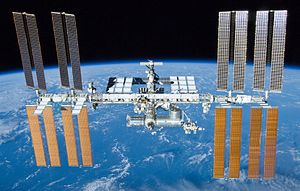Submitted by HLeSueur on 4 April 2016
 A team of researchers from the University of Southern California (USC) and NASA’s Jet Propulsion Laboratory (JPL) plans to send the fungus Aspergillus nidulans into space. A. nidulans, unlike its cousin, Aspergillus fumigatus, is rarely linked with disease (see here for 1 exception). Instead, it is associated with producing molecules that can be used to make crucial pharmaceuticals. Unfortunately, these molecules, known as secondary metabolites, are not essential for the growth or reproduction of the fungi. This means that the molecules are rarely produced. However, the team at USC has found that when the fungi are put in stressful conditions, silent secondary metabolite pathways are turned on. The researchers hope, that by sending the fungus to the international space station, the stressful environment (high radiation and microgravity) may prompt A. nidulans to produce more molecules and molecules that aren’t made when on earth. Genetic analysis of the fungus has shown that it has the potential to produce 40 different types of drugs.
A team of researchers from the University of Southern California (USC) and NASA’s Jet Propulsion Laboratory (JPL) plans to send the fungus Aspergillus nidulans into space. A. nidulans, unlike its cousin, Aspergillus fumigatus, is rarely linked with disease (see here for 1 exception). Instead, it is associated with producing molecules that can be used to make crucial pharmaceuticals. Unfortunately, these molecules, known as secondary metabolites, are not essential for the growth or reproduction of the fungi. This means that the molecules are rarely produced. However, the team at USC has found that when the fungi are put in stressful conditions, silent secondary metabolite pathways are turned on. The researchers hope, that by sending the fungus to the international space station, the stressful environment (high radiation and microgravity) may prompt A. nidulans to produce more molecules and molecules that aren’t made when on earth. Genetic analysis of the fungus has shown that it has the potential to produce 40 different types of drugs.
Already the fungus is known to produce drugs for osteoporosis and current research on earth suggests that A. nidulans may produce molecules which will help fight cancer, fungal diseases and Alzheimer’s disease. Specimens will be sent from Cape Canaveral Air Force Station in Florida on the 8th of April this year and are due to return in May.
As well as having wide-ranging uses back on earth, being able to produce drugs in space is vital as humans spend longer periods of time away from earth. NASAs human mission to Mars for example, is expected to last between 1 and 3 years – some drugs will not last this long. The development of self-sustaining drug production will enable us to go further away from Earth and spend longer in space.
News archives
-
Title
Date


